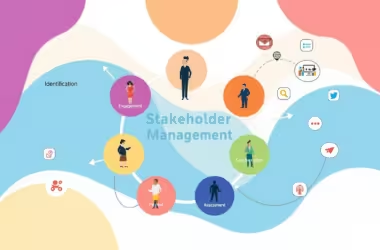Proof of Concept (POC) in software development is a crucial stage in the project lifecycle where developers validate the feasibility of their ideas before committing to full-scale development.
It involves creating a small-scale version of the software to test its functionality, performance, and usability. POC serves as a tangible demonstration that the proposed solution can address the problem effectively.
In this article, we’ll delve into the concept of POC in software development, its significance, and how to create one successfully.
Introduction to POC in Software Development
POC, as the name suggests, aims to prove the concept or idea behind a software project. POC in software serves as a preliminary stage where developers assess the viability of their solution before investing significant time and resources into development.
During this phase, developers focus on experimenting with different approaches, technologies, and design patterns to determine the most suitable solution for the problem at hand.
Understanding the Purpose of POC
The primary purpose of POC is to mitigate risks associated with software development by validating key assumptions and technical decisions early in the process.
By building a prototype or mock-up of the software, developers can identify potential challenges, limitations, and areas for improvement before proceeding to full-scale development.
POC also helps stakeholders gain confidence in the proposed solution and make informed decisions about project investment and resource allocation.
Advantages of Creating a POC
Creating a POC offers several benefits to software development teams and stakeholders:
- Risk Reduction: POC helps identify technical and functional risks early in the project lifecycle, allowing teams to address them proactively.
- Cost Savings: By validating the feasibility of the solution early on, POC helps prevent costly rework and delays during later stages of development.
- Faster Time-to-Market: POC enables teams to iterate quickly and make informed decisions, accelerating the development process and reducing time-to-market.
- Improved Stakeholder Confidence: A successful POC instills confidence in stakeholders and demonstrates the project’s potential for success, leading to better buy-in and support.
Key Components of a POC
A well-designed POC typically consists of the following components:
- Problem Statement: Clearly define the problem or opportunity the software aims to address.
- Hypothesis: Formulate a hypothesis or solution approach based on initial research and analysis.
- Prototype: Develop a prototype or mock-up of the software to demonstrate key features and functionality.
- Success Criteria: Define measurable success criteria to evaluate the effectiveness of the POC.
- Evaluation Plan: Establish a plan for testing and evaluating the POC against the success criteria.
- Documentation: Document the findings, insights, and lessons learned from the POC for future reference.
Steps to Create a POC
Creating a successful POC involves the following steps:
- Identify the Problem: Clearly define the problem or opportunity the software aims to address.
- Research and Analysis: Conduct thorough research and analysis to understand the requirements, constraints, and potential solutions.
- Formulate Hypothesis: Based on the research, formulate a hypothesis or solution approach to validate through the POC.
- Design Prototype: Develop a prototype or proof-of-concept implementation of the software using appropriate tools and technologies.
- Test and Evaluate: Test the prototype against the success criteria defined earlier and evaluate its performance, functionality, and usability.
- Gather Feedback: Gather feedback from stakeholders, end-users, and subject matter experts to identify areas for improvement.
- Iterate and Refine: Iterate on the prototype based on feedback and insights gathered during testing, refining the solution as needed.
Common Mistakes to Avoid in POC Development
While creating a POC, developers should avoid the following common mistakes:
- Over-Engineering: Avoid over-complicating the POC with unnecessary features or functionalities.
- Ignoring Stakeholder Feedback: Failure to incorporate feedback from stakeholders and end-users can lead to misalignment and dissatisfaction.
- Lack of Focus: Keep the POC focused on validating key assumptions and technical decisions rather than trying to solve all problems at once.
- Poor Documentation: Inadequate documentation of the POC findings and insights can hinder future decision-making and learning.
Examples of Successful POC Projects
Several real-world examples illustrate the effectiveness of POC in software development:
Airbnb
Before becoming a global hospitality platform, Airbnb started as a simple website with a proof-of-concept allowing hosts to rent out air mattresses in their living rooms.
Uber
Uber’s initial POC involved a basic app connecting users with nearby drivers for on-demand transportation, paving the way for its transformation into a multi-billion-dollar ride-hailing service.
Netflix
Netflix’s recommendation engine, which suggests personalized content to users based on their viewing history, began as a POC to test the feasibility of machine learning algorithms in content recommendations.
Conclusion
In conclusion, POC plays a vital role in the software development process by validating key assumptions, mitigating risks, and accelerating innovation.
By creating a proof-of-concept early in the project lifecycle, developers can gain valuable insights, make informed decisions, and ultimately deliver successful software solutions.
Embracing POC as a fundamental practice can lead to more efficient development processes, faster time-to-market, and greater stakeholder satisfaction.
FAQs about POC in Software Development
What is the difference between a POC and a prototype?
While both POC and prototypes aim to validate ideas, a POC focuses on proving the feasibility of a concept or solution, whereas a prototype focuses on demonstrating the functionality and user experience of the final product.
How long does it take to create a POC?
The time required to create a POC varies depending on the complexity of the project and the scope of the solution being tested. In general, a POC can be developed within a few days to a few weeks.
Is a POC necessary for every software development project?
While not every project may require a formal POC, conducting some form of validation or feasibility testing early in the project lifecycle is generally advisable to mitigate risks and ensure project success.
Who is responsible for creating a POC?
Creating a POC is typically a collaborative effort involving developers, architects, product managers, and other stakeholders. The development team is primarily responsible for designing, implementing, and testing the POC.
Can a failed POC still provide valuable insights?
Yes, even a failed POC can provide valuable insights into potential challenges, limitations, and areas for improvement. It’s essential to document and analyze the findings from a failed POC to inform future decision-making and learning.






